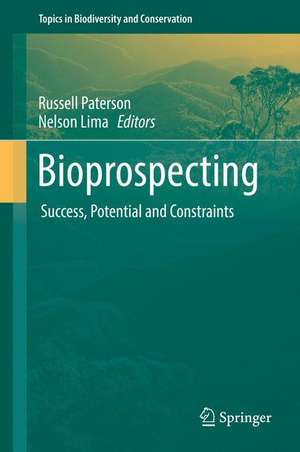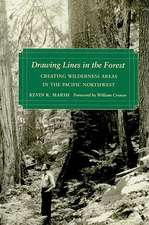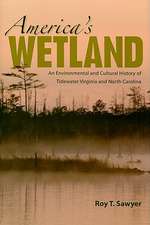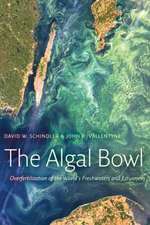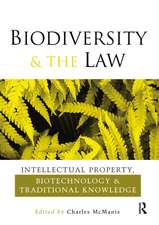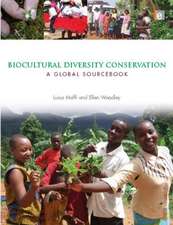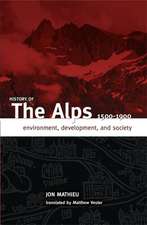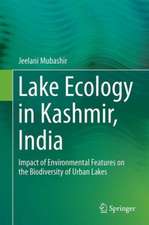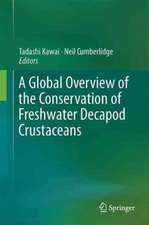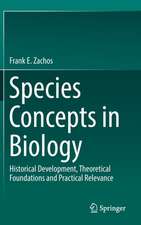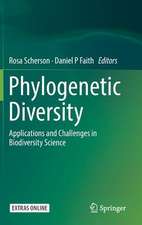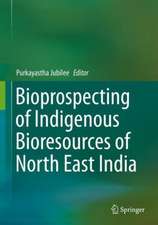Bioprospecting: Success, Potential and Constraints: Topics in Biodiversity and Conservation, cartea 16
Editat de Russell Paterson, Nelson Limaen Limba Engleză Hardback – 21 dec 2016
This book considers all aspects of bioprospecting in 14 succinct chapters and a forward by David Hawksworth. The organisms addressed include plants, insects, fungi, bacteria and phages. Bioprospecting has never been more relevant and is of renewed interest, because of the extremely worrying rise in novel, resistant pathogenic microorganisms. The practices in pharmaceutical companies have failed to deliver novel antibiotics to control these infections. We need to look for new sources of drugs from the environment on a massive scale as drug discovery is “too important to fail”. Furthermore, the field can add great value to ecosystems in terms of economics, while providing additional reasons for maintaining associated services, such as food provision, benign climate, effective nutrient cycling and cultural practices. Bioprospecting provides another reason why climate change must be reduced in order to preserve relevant environments. Previous bioprospecting projects should be re-visited and established biodiversity centres have a major role. Many different ecosystems exist which contain unique organisms with the potential to supply novel antibiotics, enzymes, food, and cosmetics, or they may simply have aesthetic value. The book stresses the difficulties in obtaining successful products and yet describes why natural products should be investigated over combinatorial chemistry. Personal experience of bioprospecting projects are given significance. Issues such as how to share the benefits equitably with local communities are described and why pharmaceutical companies can be reluctant to be involved. Legal issues are discussed. Finally, there has never been a better time for a new book on bioprospecting, because of the need to preserve ecosystems, and from the emergence of resistant pathogenic microorganisms.
| Toate formatele și edițiile | Preț | Express |
|---|---|---|
| Paperback (1) | 785.43 lei 38-44 zile | |
| Springer International Publishing – 30 apr 2018 | 785.43 lei 38-44 zile | |
| Hardback (1) | 806.76 lei 38-44 zile | |
| Springer International Publishing – 21 dec 2016 | 806.76 lei 38-44 zile |
Din seria Topics in Biodiversity and Conservation
- 24%
 Preț: 1605.63 lei
Preț: 1605.63 lei - 18%
 Preț: 1239.49 lei
Preț: 1239.49 lei - 18%
 Preț: 947.50 lei
Preț: 947.50 lei - 18%
 Preț: 1218.21 lei
Preț: 1218.21 lei - 18%
 Preț: 942.31 lei
Preț: 942.31 lei - 18%
 Preț: 944.51 lei
Preț: 944.51 lei -
 Preț: 435.38 lei
Preț: 435.38 lei - 15%
 Preț: 646.62 lei
Preț: 646.62 lei - 18%
 Preț: 1114.65 lei
Preț: 1114.65 lei - 18%
 Preț: 1126.35 lei
Preț: 1126.35 lei - 18%
 Preț: 1834.27 lei
Preț: 1834.27 lei - 18%
 Preț: 1019.49 lei
Preț: 1019.49 lei - 18%
 Preț: 1236.38 lei
Preț: 1236.38 lei - 18%
 Preț: 1231.47 lei
Preț: 1231.47 lei - 18%
 Preț: 1236.38 lei
Preț: 1236.38 lei - 18%
 Preț: 1230.66 lei
Preț: 1230.66 lei - 18%
 Preț: 1232.71 lei
Preț: 1232.71 lei - 18%
 Preț: 1376.53 lei
Preț: 1376.53 lei - 18%
 Preț: 944.51 lei
Preț: 944.51 lei
Preț: 806.76 lei
Preț vechi: 1061.53 lei
-24% Nou
Puncte Express: 1210
Preț estimativ în valută:
154.39€ • 160.59$ • 127.46£
154.39€ • 160.59$ • 127.46£
Carte tipărită la comandă
Livrare economică 10-16 aprilie
Preluare comenzi: 021 569.72.76
Specificații
ISBN-13: 9783319479330
ISBN-10: 3319479334
Pagini: 370
Ilustrații: X, 303 p. 44 illus., 19 illus. in color.
Dimensiuni: 155 x 235 x 22 mm
Greutate: 0.79 kg
Ediția:1st ed. 2017
Editura: Springer International Publishing
Colecția Springer
Seria Topics in Biodiversity and Conservation
Locul publicării:Cham, Switzerland
ISBN-10: 3319479334
Pagini: 370
Ilustrații: X, 303 p. 44 illus., 19 illus. in color.
Dimensiuni: 155 x 235 x 22 mm
Greutate: 0.79 kg
Ediția:1st ed. 2017
Editura: Springer International Publishing
Colecția Springer
Seria Topics in Biodiversity and Conservation
Locul publicării:Cham, Switzerland
Cuprins
Forward.- 1. Bioprospecting: An Industrial Perspective.- 2. Current Status and Perspectives in Marine Biodiscovery.- 3. Contributions of microbial resource centers to bioprospecting of bacteria and filamentous microfungi.- 4. Bioprospecting Archaea: focus on extreme halophiles.- 5. Bioprospecting soil metagenomes for antibiotics.- 6. Biotechnological applications of the Roseobacter clade.- 7. Iwokrama fungal/plant bioprospecting project 2000-2003 - a model for the future?- 8. Bioprospecting with Brazilian fungi.- 9. Secondary metabolites of mine waste acidophilic fungi.- 10. Insect bioprospecting especially in India.- 11. Phages against infectious diseases.- 12. The role of biodiversity centres in bioprospecting: a case study from Sarawak.- 13. Legal and ethnoecological components of bioprospecting.- 14. Bioprospecting insights.
Notă biografică
Editors:
Dr. Russell Paterson, University of Minho, Braga, Portugal
Dr. Nelson Lima, University of Minho, Braga, Portugal
Textul de pe ultima copertă
This book considers all aspects of bioprospecting in 14 succinct chapters and a forward by David Hawksworth. The organisms addressed include plants, insects, fungi, bacteria and phages. Bioprospecting has never been more relevant and is of renewed interest, because of the extremely worrying rise in novel, resistant pathogenic microorganisms. The practices in pharmaceutical companies have failed to deliver novel antibiotics to control these infections. We need to look for new sources of drugs from the environment on a massive scale as drug discovery is “too important to fail”. Furthermore, the field can add great value to ecosystems in terms of economics, while providing additional reasons for maintaining associated services, such as food provision, benign climate, effective nutrient cycling and cultural practices. Bioprospecting provides another reason why climate change must be reduced in order to preserve relevant environments. Previous bioprospecting projects should be re-visited and established biodiversity centres have a major role. Many different ecosystems exist which contain unique organisms with the potential to supply novel antibiotics, enzymes, food, and cosmetics, or they may simply have aesthetic value. The book stresses the difficulties in obtaining successful products and yet describes why natural products should be investigated over combinatorial chemistry. Personal experience of bioprospecting projects are given significance. Issues such as how to share the benefits equitably with local communities are described and why pharmaceutical companies can be reluctant to be involved. Legal issues are discussed. Finally, there has never been a better time for a new book on bioprospecting, because of the need to preserve ecosystems, and from the emergence of resistant pathogenic microorganisms.
Caracteristici
Provides parameters to obtain antibiotics for resistant diseases Includes even more reasons to preserve existing ecosystems Shows how economic and societal benefits can be obtained for all
